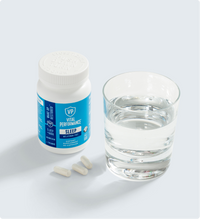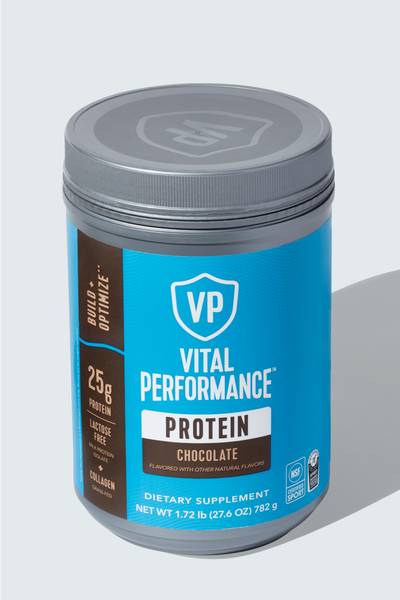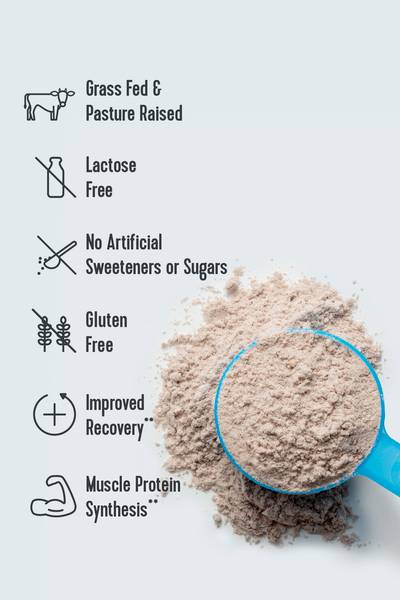Even if you don’t know what functional fitness is, it’s something you already do everyday. It’s the squat to pick your child up off the floor or the push and pull of a heavy door on the way to work. In other words, it’s part of being human.
“Functional fitness trains your body for daily activities using movements like pushing, pulling, squatting, lifting and twisting,” explains Carolyn Nicholas, Functional Medicine Certified Health Coach, and Director of Coaching at Able.
By training our bodies for these exercises, you’re increasing your flexibility, balance and strength. “You don't need to worry that bringing in that gallon of milk or mowing the lawn is going to cause a strain or leave you with an aching back for a week.”
Now that you know how important functional fitness is, here’s the ultimate guide to making the most of your movement.

Why is functional fitness important?
The main benefit of functional fitness is right in the name: function. “It is the idea that the workouts or exercises you do should carry over, or transfer, to the tasks or demands of your daily life,” says Korey Van Wyk, MS, CSCS, Pn2.
“By training your body to perform everyday movements, you’re reducing your risk of injury and increasing your quality of life, adds Meghan Kennihan, NASM Certified Personal Trainer, RRCA & USATF Certified Run Coach.
An example of this is constantly having to get up and down off the floor while playing with your kids. If you haven’t used the muscles of your legs or arms in a while, you’re likely to struggle, or even injure yourself. But if functional training is done correctly, “your training should give you the strength, mobility and endurance to do nearly anything you want to do,” Van Wyk says.
Unlike machines at a gym that isolate one muscle group at a time, functional exercise uses compound movements (AKA an exercise that works multiple muscle groups at a time). “Functional fitness improves stability and balance by using all muscles together in movements,” says Nicholas. You’re also more likely to use bodyweight and free weights as resistance.
The goals of functional fitness are different than the goals attained from traditional weight lifting. “Instead of squatting to lift the heaviest weight you possibly can or pressing overhead to get the biggest shoulders, you're more concerned with performing things well or perfectly placing a cup on the top shelf,” says Steven Mack, a certified strength and conditioning specialist and the owner of Simple Solutions Fitness.
Who is functional fitness for?
“Functional Fitness is for those who want to age gracefully, maintain their independence later in life, and get the most out of their body in all ranges of motion,” explains Dr. Chase Horton, a Sports Chiropractor with a B.S. in Exercise Science. Everyone can get something out of it from busy parents to athletes to seniors.
If you’re looking for a fitness class that focuses functional fitness, there’s are a few options to try. F45 (F stands for functional) focuses entirely on functional fitness by involving movements such as squats, lunges, pushups, and more. Even CrossFit and other HIIT styles of exercise often include a blend of functional fitness with traditional Olympic weightlifting, adds Horton.
Related Articles
Best Functional Training Exercises
Here are five functional fitness movements that experts recommend.
Squat
Why it’s important: “We use the squat movement all the time, whether it’s getting in a car, using the toilet or just sitting down,” says Nicholas.
How to do it: Lower yourself as if you’re going to sit in a chair. Keep your arms out in front of you and your feet shoulder-width apart.
Note: Movement can be modified and made more difficult by holding a weight in front of you as you lower yourself.
Romanian Deadlift
Why it’s important: “This movement is a basic hip hinge, often done holding a barbell with weight,” says Horton. “Hip hinges work the powerful muscles of the hip while keeping your hamstrings flexible.”
How To Do It: Stand tall with your feet at shoulder width apart, holding a barbell or dumbbell. (Start light here.) Slowly bend forward at the waist while keeping your back straight and chest out. Unlike a standard deadlift, you keep only a slight bend in the knee. Bend until the bar is below your knees, and squeeze your glutes while you stand back up.
Bear Crawl
Why it’s important: “You need the ability to crawl if you were to fall or if you'd like to roll around on the floor and keep up with your kids,” explains Mack.
How to do it: Start by setting your hands under your shoulders and knees under your hips. Pull your ribs down towards your hips and brace your core. Lift your hips up, then alternate between your opposite arm and leg (left arm, right foot) to take steps forward, backward and laterally.

Lunge
Why it’s important: “This movement is similar to what you do when you get off the ground and it strengthens all your leg muscles, which help keep your hips and knees strong. These are crucial for doing every activity,” says Kennihan.
How to do it: Split your legs so they form a triangle with the ground. Bend both knees to make 90-degree angles with your knee aligned with your ankle in the front and your back shin parallel to the ground. Press up and return to start.
Suitcase Carry
Why it’s important: “The unbalanced nature of the suitcase carry strengthens your core for unbalanced situations as well as strengthening your grip,” says Van Wyk.
How to do it: While standing, hold a weight (usually a dumbbell or kettlebell) by your side without letting it rest on the side of your leg. Walk at a normal, controlled pace for the desired distance or length of time. You shouldn't be able to jog with the weight but it shouldn't be so heavy that it disrupts your walking pattern and rhythm. Keep your body upright. Don't let the weight pull you down to one side, but don't overcompensate by leaning to the opposite side.
Note: Once you feel comfortable doing it forward, challenge yourself by doing it backward.
Vital Note: This article has been made available for informational and educational purposes only. It is not intended to be a substitute for professional medical advice, diagnosis, or treatment. Always seek the advice of your physician or another qualified health provider with any questions you may have regarding a medical condition. Your licensed healthcare professional can best provide you with the diagnosis and treatment of any medical condition and assist you as well in deciding whether a dietary supplement will be a helpful addition to your regimen.













